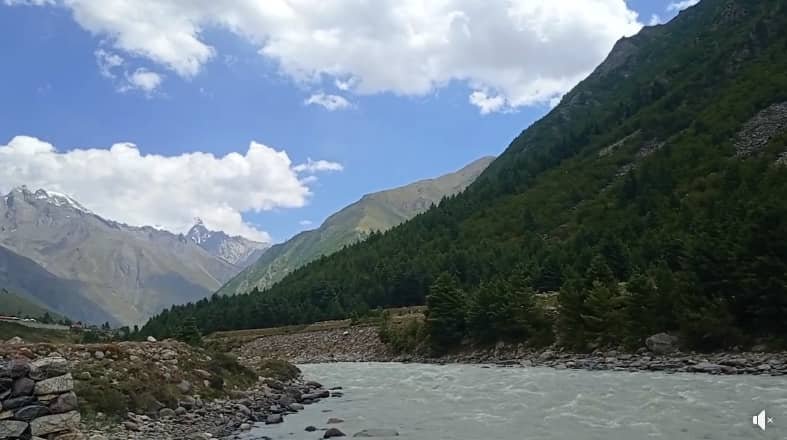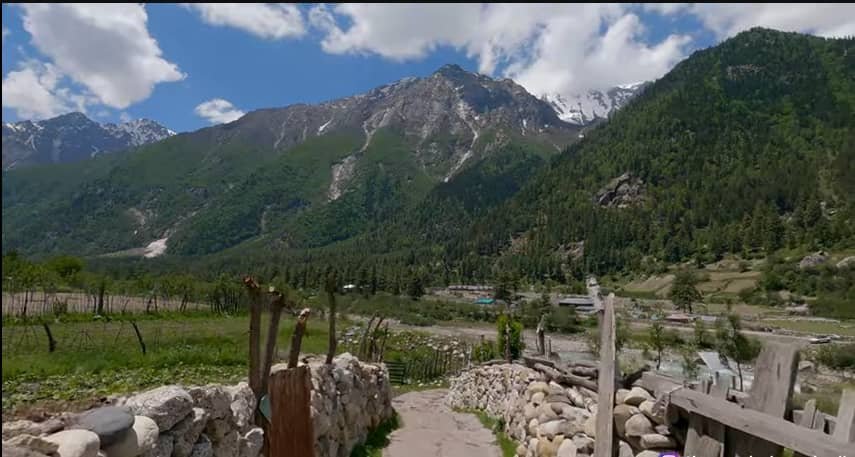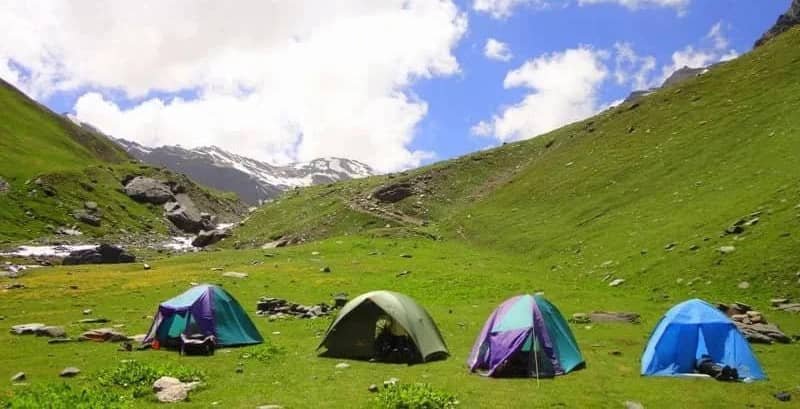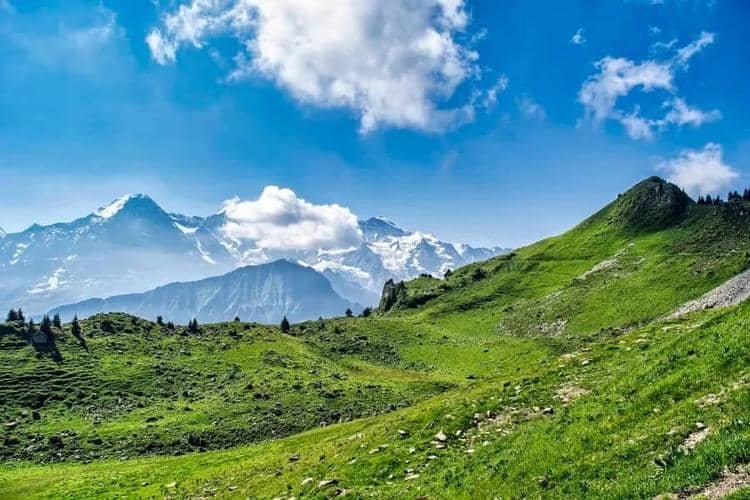Chitkul is the last village of India on the Indo-Tibet Route, located in the Kinnaur district of Himachal Pradesh. It is about 23 kilometers from Sangla, which takes roughly 1 hour and 10 minutes to reach. Perched at 11,320 feet (3,450 meters) above sea level. Chitkul Himachal Pradesh is famous as India’s last village. Surrounded by snow-capped peaks, lush green meadows, and the sparkling River Baspa, Chitkul offers stunning landscapes that feel like a slice of paradise. It is a great trekking place and provides beautiful Baspa River views. Ideal for photography, Chitkul also offers a peaceful environment. It is said to have some of the cleanest air in India, making it perfect for relaxation and nature lovers.
Chitkul Village
Chitkul is a beautiful village and a famous tourist destination at a high altitude. Located in the Kinnaur district of Himachal Pradesh, it is just 23 kilometers from Sangla village. The apple orchards in Chitkul make the village even more picturesque. A visit to the Kagyupa Temple is a must, where you can see an ancient image of Shakyamuni Buddha along with intricate mandalas and statues of the Four Directional Kings. The village has charming houses with slate and wooden roofs, although more modern tin roofs are becoming common. For accommodation, there are some homestays available, but staying in Chitkul can be a bit costly. It’s important to pack warm clothes whenever you visit, as the weather can change unexpectedly from warm to cold. Many people prefer to stay in Sangla, where better facilities are available. Chitkul offers a unique experience for all visitors.
Zostel Chitkul
For travelers who want to experience local culture, Zostel Chitkul and other cozy resorts in Chitkul offer comfortable places to stay that reflect the village’s charm. Staying in homestays gives visitors a chance to enjoy the warm hospitality of the Kinnauri people and connect with the local community. Most visitors usually stay in Sangla. They leave in the morning to enjoy Chitkul village and return to Sangla in the evening. However, it’s worth trying out the services at Zostel Chitkul at least once. The local culture is very impressive, so it’s a good idea to spend at least one night in Chitkul.
Chitkul Himachal
- It is the last village in the Baspa Valley. Travelers can visit this beautiful spot without needing a permit. The village is home to the Kagyupa Temple, which features an ancient image of Shakyamuni Buddha.
- For those adventurous enough to cross the Charang Pass, which stands at 5,242 meters, the descent to Chitkul is steep and winding. The village has a local goddess, revered by Parikrama pilgrims, who are linked to the deity of Gangotri. Historically, locals would carry the deity to Gangotri on foot over high mountain trails. Chitkul is about 40 kilometers from Karcham, where the road branches off from the Hindustan-Tibet Road (NH 22).
- Chitkul is known for its delicious apples. Exploring the orchards is a delightful experience, especially in the harvest season. Visitors can engage with the local people, experience their traditions, and taste authentic Himachali cuisine.
- Kinnaur is one of the twelve districts of Himachal Pradesh and is known for its rich cultural heritage and natural beauty. The region is famous for its valleys, apple orchards, and majestic mountains. The Kinnaur Kailash mountain range is a significant pilgrimage site, attracting numerous trekkers and devotees.
- In winter, Chitkul is often covered in snow, prompting residents to move to lower areas of Himachal Pradesh. A recent study by the Centre of Atmospheric Sciences at IIT Delhi found that Chitkul has the cleanest air in India.
What to Do in Kinnaur
- Kinnaur is a treasure trove of breathtaking natural beauty and adventure. One of the best ways to experience this stunning region is through its numerous trekking routes, which offer spectacular views of the Himalayas.
- Just a short distance from Chitkul, Rakchham is known for its peaceful atmosphere and beautiful landscapes, making it a perfect spot for relaxation and photography. Chitkul serves as a starting point for thrilling treks like the Lamkhaga Pass and Borasu Pass. These treks take you through some of the most stunning scenery in the region, with opportunities to see diverse flora and fauna.
- The Nagasthi ITBP post is only 4 kilometers from Chitkul, offering a glimpse into the life of border security forces in the region. The Ranikanda Meadows, located 10 kilometers away, are known for their scenic beauty and are a great place for picnics or a leisurely walk.
Best Time to Visit Chitkul
- The perfect time to explore Chitkul is between March and June as well as September and November. During these months, the weather is enjoyable, making it great for sightseeing and outdoor adventures. You can expect lush greenery and stunning views of the mountains and valleys, enhancing your experience in this picturesque village.
- In winter, from December to February, Chitkul experiences heavy snowfall. While this creates a picturesque winter wonderland, it can also make travel challenging. Roads may become difficult to navigate, and some accommodations might be closed.
- It’s important to note that ATMs may not be available in Chitkul, so it’s wise to carry enough cash for your expenses. Additionally, the weather in the mountains can change rapidly, so make sure to bring appropriate clothing and gear to stay comfortable, no matter the conditions.
How to Reach Chitkul, Kinnaur
- From Delhi: Approximately 569 km; takes about 12-14 hours.
- From Chandigarh: About 345 km; takes around 8-10 hours.
- From Sangla: Approximately 23 km; the scenic drive takes about 1 hour.
- Driving Tips: Roads can be narrow and winding, especially in the hills, so drive carefully. Check weather conditions before your trip, as snowfall can affect road access in winter.
- Permits: No special permits are required for Chitkul, but it’s advisable to carry ID proof.
With these options, reaching Chitkul offers a beautiful journey into the stunning landscapes of the Himalayas.









